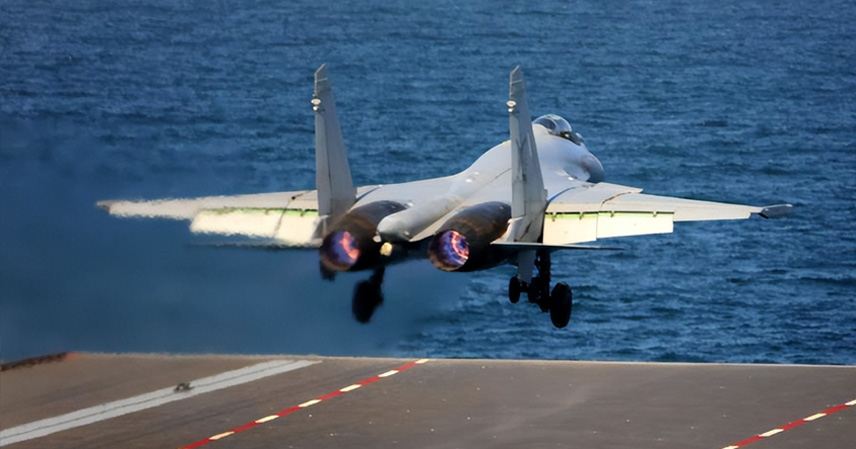On September 22, China’s Fujian aircraft carrier successfully catapult-launched the J-35 stealth fighter, the J-15T heavy carrier-based fighter, and the KJ-600 early warning aircraft in succession. The event shocked the U.S., with American media outlets rushing to release breaking reports at midnight. For once, their tone shifted from mockery to surprise and even admiration. Notably, U.S. hawkish strategist Tom Shugart exclaimed on social media: “My God, well played!”
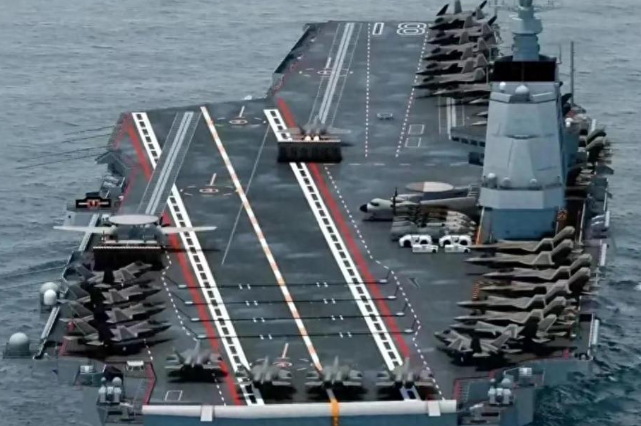
The Breakthrough Behind Fujian’s Test
Earlier in September, the Fujian quietly departed Changxing Island in Shanghai, transited the Taiwan Strait, and sailed south toward the South China Sea. This route mirrored the Shandong carrier’s path before its commissioning, signaling Fujian’s impending operational status.
The Fujian has already completed eight sea trials lasting 117 days, covering propulsion, power, and electromagnetic launch system tests. This culminated in a released video showcasing the triple-aircraft launch—a technological report card for China’s first supercarrier.
- J-35: China’s indigenously developed stealth carrier fighter, combining fifth-generation stealth with advanced information warfare capabilities.
- J-15T: A heavy carrier-based fighter with a maximum takeoff weight of nearly 38 tons and superior payload capacity.
- KJ-600: A fixed-wing early warning aircraft, dubbed the “airborne brain” of a carrier group, capable of detecting stealth targets up to 600 km away.
Launching three different aircraft types of varying weight and propulsion from the same deck highlighted the maturity, stability, and efficiency of Fujian’s electromagnetic catapult system.
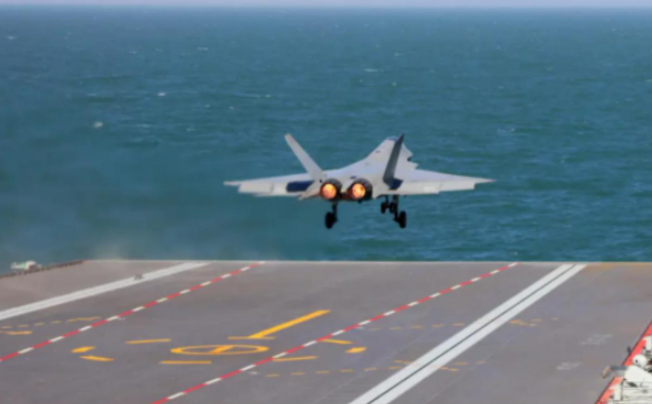
Outperforming the U.S. Ford-Class Carrier
The U.S. Ford-class carrier still struggles with its EMALS (Electromagnetic Aircraft Launch System), averaging one failure every 400 launches. By contrast, Fujian’s land-based testing achieved “10,000 launches without failure.” Its medium-voltage DC power system has a 92% energy conversion efficiency, far surpassing Ford’s 78%. This means Fujian can launch more—and heavier—aircraft within the same timeframe.
U.S. outlet The War Zone described the achievement as a “stunning leap forward in carrier capability”, while Newsweek admitted that China had reached a “major breakthrough” and predicted the Fujian would further expand China’s influence in the Indo-Pacific.
Shugart added a pointed reminder: “Beyond electromagnetic catapults, don’t forget China’s carriers are backed by hundreds of long-range anti-ship and hypersonic missiles.”
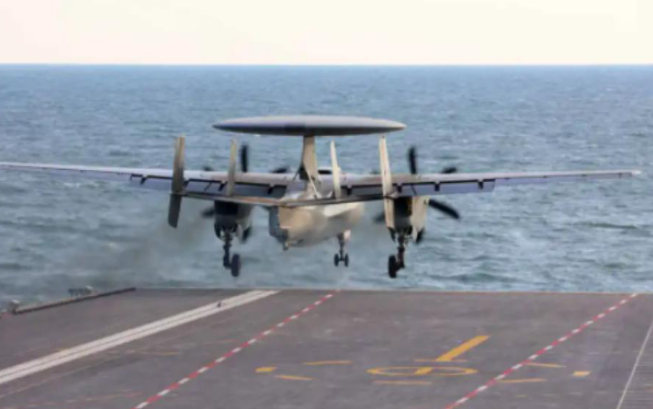
Strategic Implications
Fujian’s success shattered U.S. monopoly over carrier EMALS technology. The Ford-class has yet to demonstrate reliable launches of the E-2D Hawkeye early warning plane, while Fujian successfully launched a stealth fighter, a heavy jet, and an early warning aircraft—all on its debut.
This milestone signals not just technical progress but strategic transformation. With its carrier strike group, China can now extend operational coverage across the second island chain, including Guam. Supported by Type 055 destroyers (with 1,000+ km missile range) and KJ-600’s radar reach, China’s naval strike envelope has significantly expanded.
U.S. outlet Defense News remarked that China is no longer “imitating” but is instead “redefining the logic of carrier warfare.”
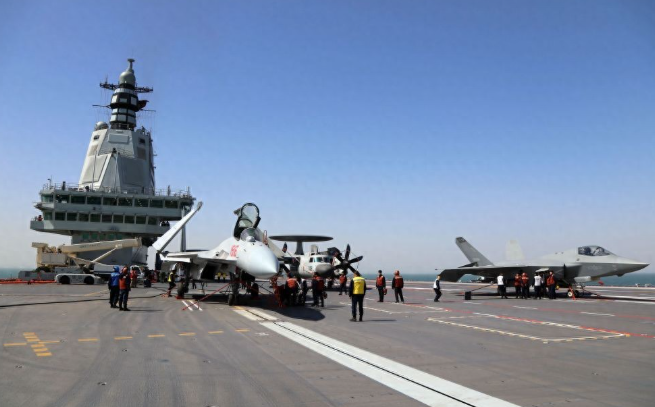
Toward a “Three-Carrier Era”
The Fujian will join the Liaoning and Shandong, ushering China into its “three-carrier era.” Deployed respectively to the north, east, and south (Sanya base), the carriers enable rotation, resource sharing, and true system-level joint operations.
With an air wing of 70–80 aircraft—including the J-35, J-15T, KJ-600, electronic warfare planes, UAVs, and helicopters—the Fujian will redefine regional naval power. Analysts suggest China’s first nuclear-powered carrier is already under construction, expected by 2030 with even greater tonnage and global deployment capability.
Symbolism and Timing
The announcement came as a U.S. Congressional delegation led by Rep. Adam Smith visited China. Releasing the footage during this period was seen as a deliberate strategic signal.
Meanwhile, the U.S. Navy was forced to redirect the aging USS Nimitz to the Western Pacific, highlighting the pressure from China’s expanding carrier fleet.
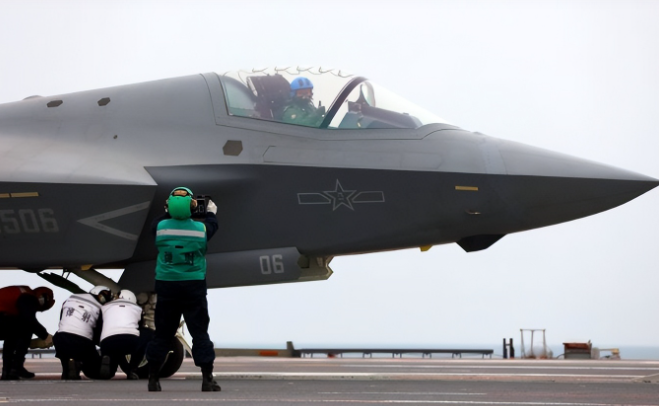
From the Liaoning’s commissioning in 2012 to Fujian’s EMALS debut in 2025, China achieved in 13 years what took the U.S. decades. Every launch from the Fujian represents not just technical progress but a new era for the PLA Navy.
Conclusion
The successful launch of three aircraft types from the Fujian marks a historic leap: from near-shore defense to blue-water operations. It signals the erosion of U.S. carrier dominance and the arrival of China as a peer competitor at sea. The balance of power in the Western Pacific is quietly shifting, and the Fujian has become the clearest symbol of that transformation.
References
- The War Zone, September 22, 2025
- Newsweek coverage on China’s Fujian carrier
- PLA Navy documentary “How Far is the Far Sea”

